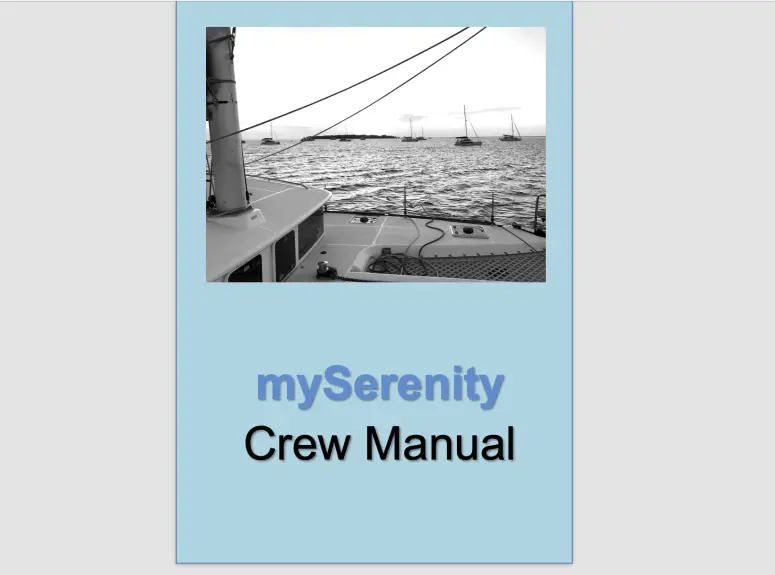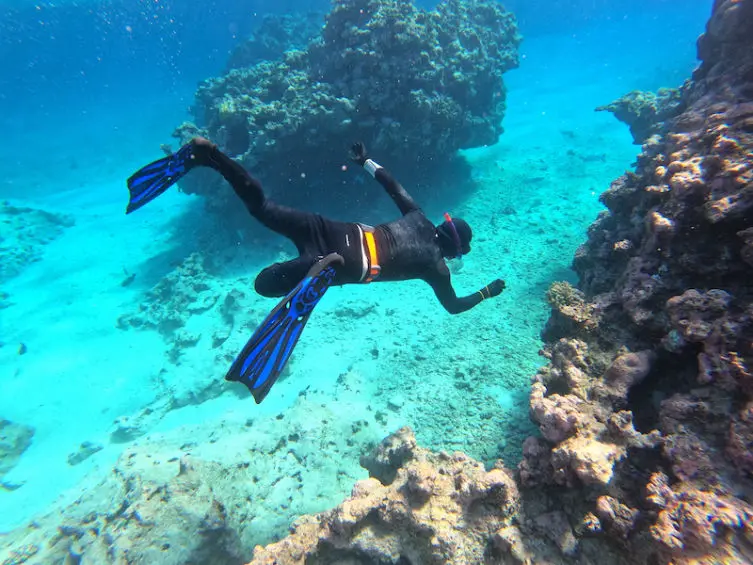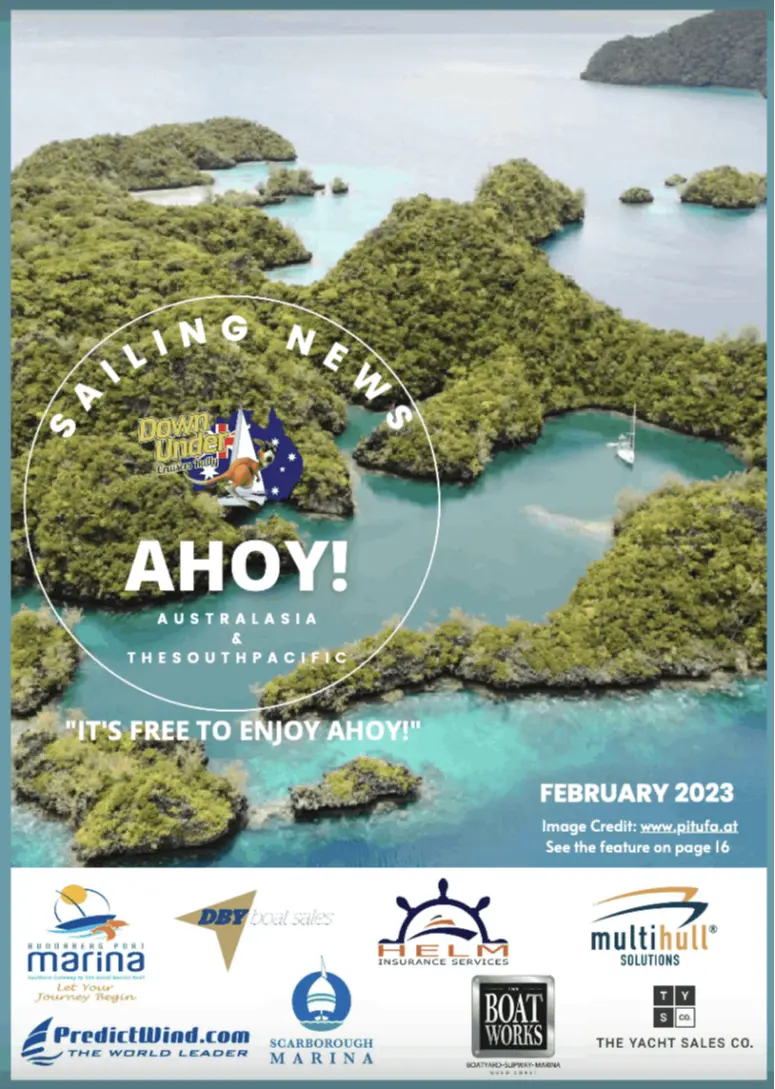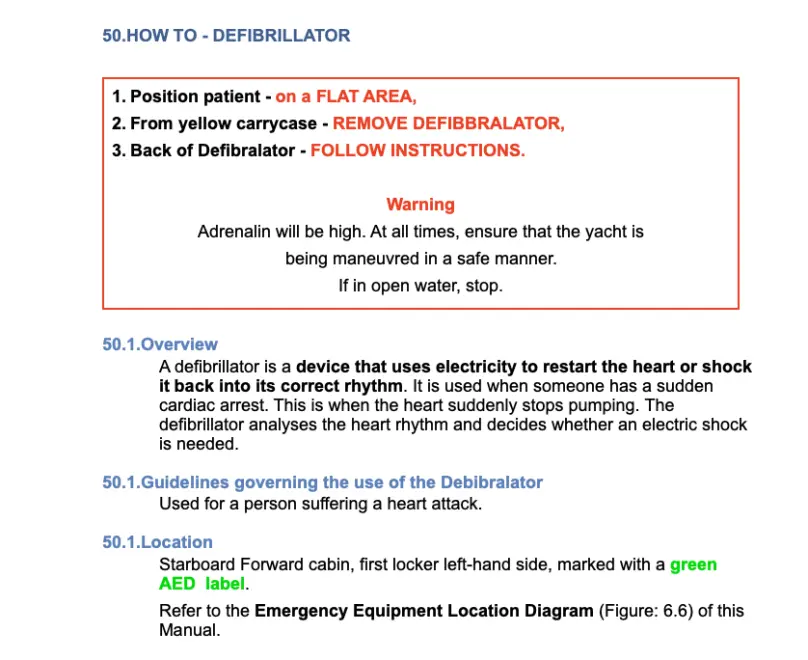CREW DECLARATION - Pros.
1. Provides clear requirements that must be met,
2. Provides clear understanding in the event of crew misdemeanours,
3. Covers vessel owners duty-of-care requirements, regarding safety at sea, customs and immigration, even evacuation at sea,
4. Relieves the vessel owner of crew member responsibility when certain criteria are not met,
5. Can be used in any court of law as evidence,
It’s a Contract of sorts as it carries signatures from both parties.

CREW DECLARATION Form.
Offshore, the only immediate help you will get is from the person next to you. We mandate our crew to complete a first aid course that includes a Defibrillator (and needles where possible) in their course data, but why?
If the patient needs to be evacuated, does your standard Insurance cover you this far out to sea on a private vessel?
Read more

CREW MANUAL - Cons
1. The vessel owner needs to follow these guidelines too…closely (Your crew will be expecting you to do this and will follow by example),
2. Using the manual as a ‘must do…’, rather than a ‘how to…(there is a big difference, and we all forget),
3. The guidelines need to be precise without being overbearing, and/or dictatorial in complexity and rambling on.
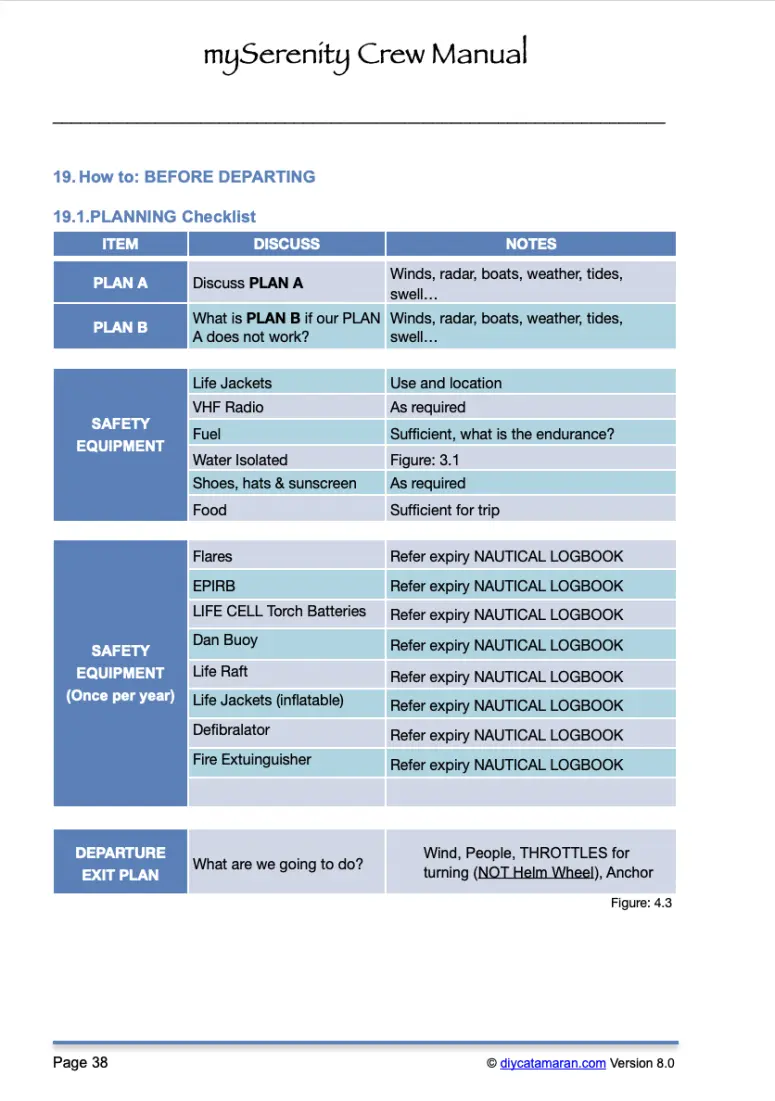
CREW MANUAL - Pros:
Pros of having a crew manual can enable you to:
1. Provide clear expectations, with very simple clear direction,
2. Motivates and empowers crew,
3. Advance instruction without being the bad guy on the day,
4. Fast-tracks departures (crew already expecting what needs to be done),
5. Much improved safety at sea,
6. How to…(blue) for equipment information,
7. How to…(red) for high priority information,
8. Complying with State, National & Maritime Legislation and Insurance fine-print,
9. Complying with legal duty-of-care afforded crew under Maritime legislation, and
10. Include procedure and proactive maintenance (ie. you have been caring for the vessel). A huge drawcard later when selling the vessel.

Short term pain for long term gain
Understanding the psychology behind documenting information onboard your vessel was covered in topic 'empowering crew'.
If you have yet to read 'empowering crew', use the menu to locate as we are building on that topic here.
Here we will cover two effective, but opposing documentation options from that we have developed. A less formal How to…Crew Manual, and a formal Must do…Crew Declaration Form.
